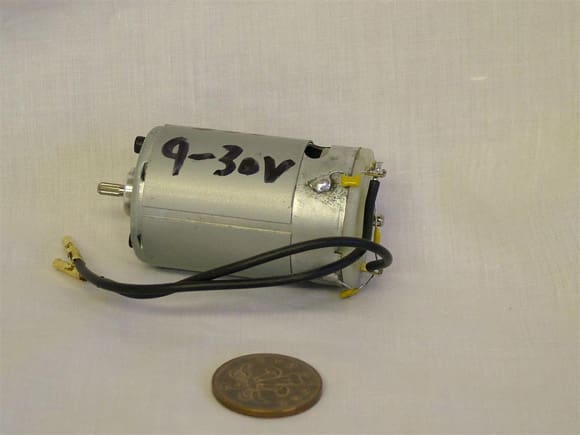
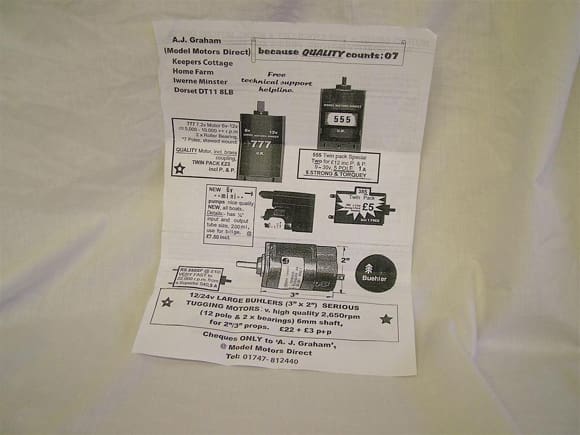
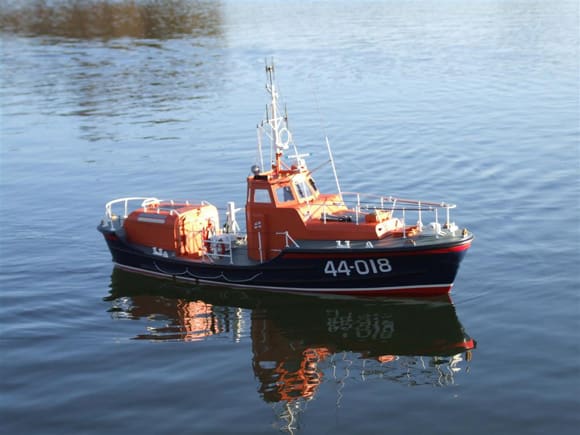
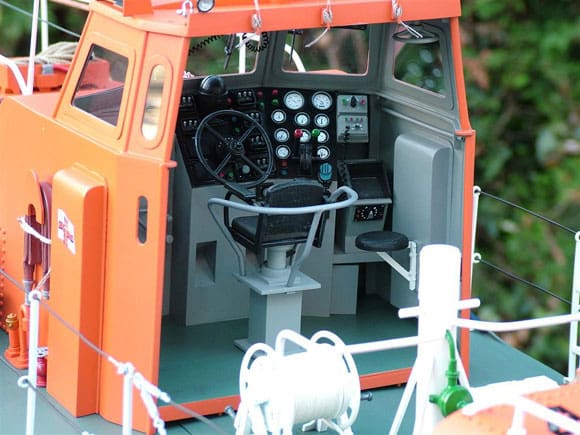
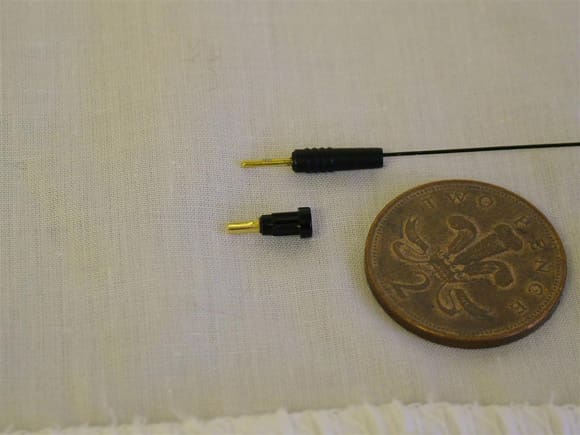
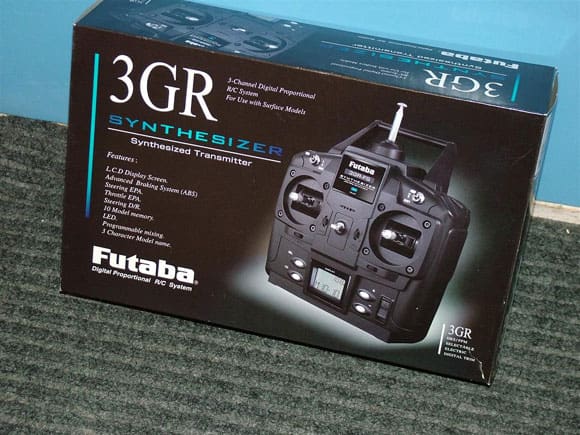
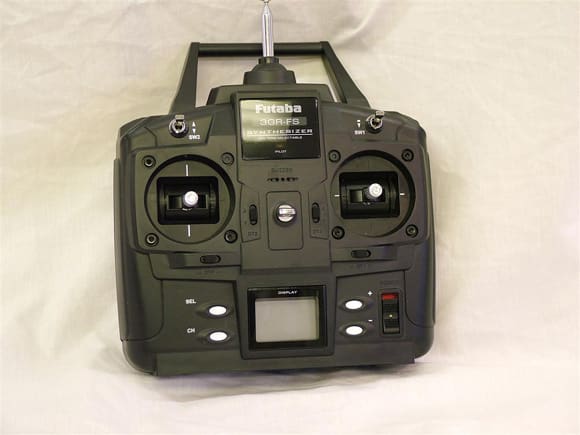
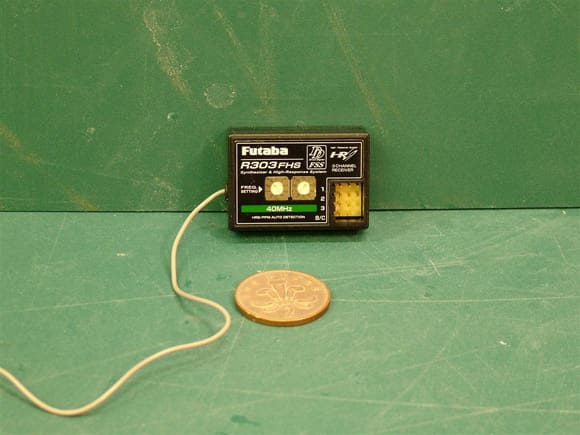
Model Motors Direct
This business, run by Alistair Graham, specialises in supplying motors for model use. He is a regular stallholder at model exhibitions and his business is primarily mail order. As a result of the building and plan feature for HMS M15 written by Paul, Alistair wrote and sent a couple of his 555 9v-32v, motors, Photo 1,that he thought would be suitable as an alternative motive power for this model. His suggestion was that these motors would dispense with the need for gearboxes, because of their high torque and low current consumption. Although not yet installed in the model, on a bench test Paul can confirm that at approximately 9v, the motors do indeed have a very low current consumption and are very powerful. The claimed power consumption is as little as one amp. The only snag is that many modellers now use buggy 7.2v packs for motor power needs and at this voltage the motors did not perform as well as they would within the recommended voltage rating range. In practice, an 8.4v (7 cell NiCad NiMH pack) would give the minimum power supply for these motors to perform reasonably well or you could use two buggy packs in series and adjust the ESC (Electronic Speed Controllers) if need be.
Alistair has always had an interest in providing power for model boats and can usually offer a range of suitable motors for our needs at very reasonable prices and has a very straightforward A4 advertising sheet, Photo 2. There is no doubt with the current (pun there!) range of ESCs and their ability to provide a smooth power supply from zero to maximum, that in many cases a gearbox is now redundant.
As always, the combination of motor, propeller, power supply and ESC are interlinked and have to be considered as a whole for best and most economical performance. Model Motors Direct can be found at Keepers Cottage, Howe Farm, Iwerne Minster, Dorset, DT11 8LB., Tel. 01747 812440. They do not currently have a website.
Enjoy more Model Boats Magazine reading in the monthly magazine.
Click here to subscribe & save.
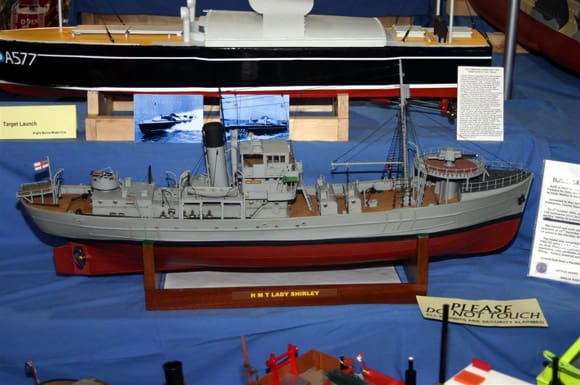
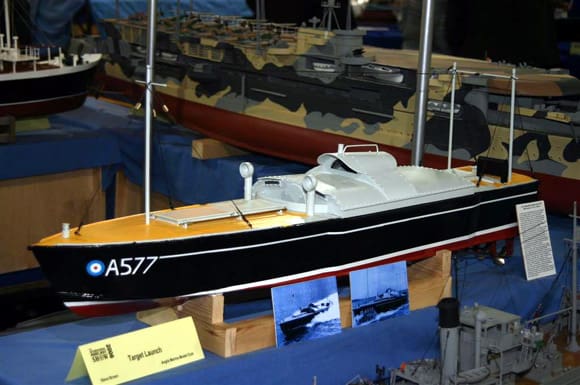
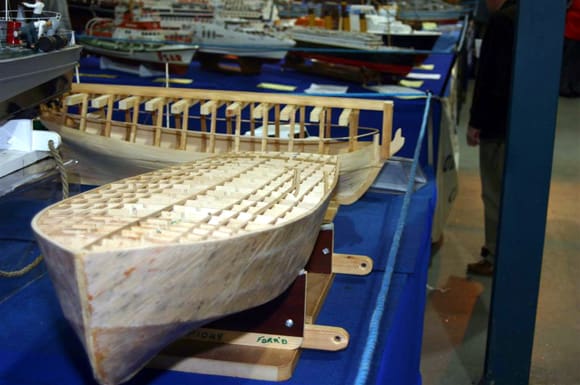
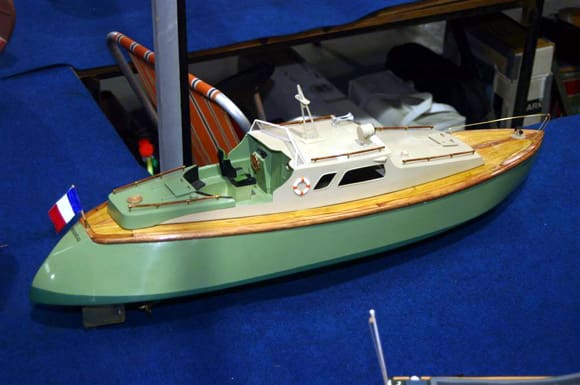
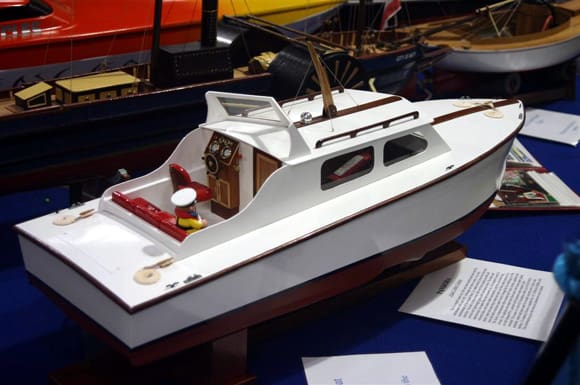
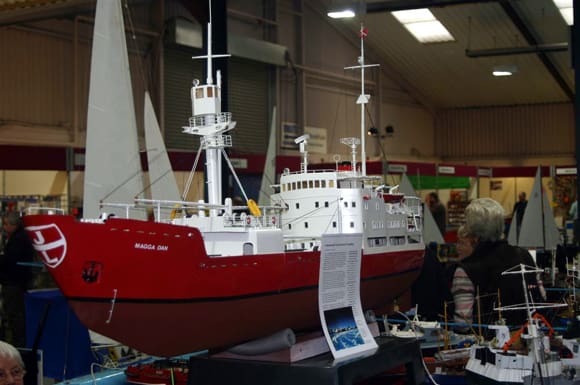
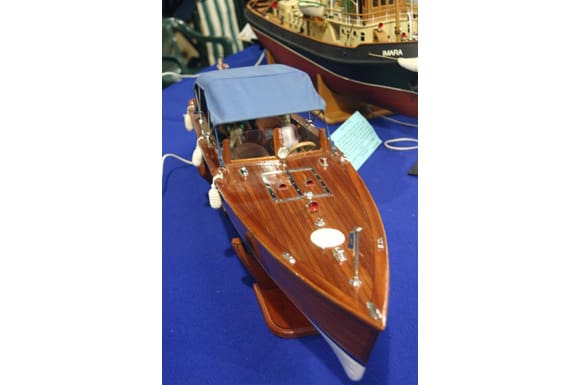
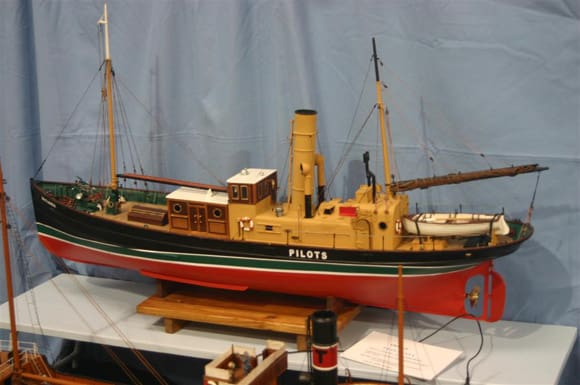
Radio Control Installation
A few thoughts here may not be amiss. Paul tested his review model of The Scout on the large lake of the Brentwood MY&PBC, early in December 2006, Photos 3 & 4 – the full review will appear shortly in this magazine.
There was an unexpected problem in that the controllable range was less than expected and this had not been the case with other models. The R/C equipment being used was his favourite Multiplex SX Cockpit system. Everything worked OK, but at distances that were still in sight (approximately 50m plus) sometimes the model went to failsafe mode. Having checked that the Tx was OK, recovered the model (it just started again under its own volition) a check was made of the Receiver connections, etc. Nothing was amiss, except that the Rx aerial was hung (as usual), around the inside of the stern compartment.
So back to the instructions always a good place to start and these clearly said that the receiver aerial should ideally be outside the model, not shortened and not near other electrical components such as power cables, motors and speed controllers.
Upon stretching it out in a straight line, from the stern towards the bows, things improved 100s of percentage points, and taking it down the other side of the model away from the power cables helped as well. So the point of this homily is that the instructions are there for a good reason and should not be ignored.
In point of fact, a vertical external aerial is probably best, but can look out of place on a scale model unless it is part of the existing aerial arrangements or inside a hollow mast. Upon mentioning this to George Turner, he provided a very nice black and very thin flexible aerial, approximately 30cm long, primarily for his semi-scale fast electric models, but also having a place on other models. The aerial is of the plug-in variety with a gold plated connector and the socket for deck mounting is very small, Photo 5. This socket is designed to be inserted through an interference fit hole – i.e. it just presses into place – through for example a 1mm styrene deck, there is no retaining nut. The aerial is removable for static display purposes and because it is painted black, it is also hardly visible when in place. Price is £4.95. This is a recommended item. George Turner Models can be found at 01702 219030, or on the web at George Turner Models.
Multiplex Cockpit R/C system
In December, Paul had some correspondence with Kenneth Sharpe who was endeavoring to set up his Cockpit SX radio system to control two motors and have it also controlling the relative speed and direction of rotation of those motors. From his notes, published with his agreement, this is what he did:
Using Easy Mode One, he selected Mixer V-Tail Mode 4. This put both motors on the L.H. fore-aft stick with Right Left movement of the same stick controlling the relative speed and direction of rotation. The R.H. stick controls the rudder as normal. On the receiver, the steering is on channel 1 and the speed controllers are on channels 2 & 3. Thus by using the left hand stick in both up/down and left/right he can obtain his desired mixing effect. Indeed he has more control than with an onboard mixer, because if the L.H. stick is simply used up and down for forwards and reverse, then there is no mixing effect at all, because the rudder stick (R.H.) is independent of the mixing effect. The point is that he used the functions for gliders/planes to achieve what he wanted, without using a mixer installed with the ESCs in the model. There is also a very useful matrix on the Multiplex forum that sets out quite simply what function does what.
Futaba Radio Control Equipment
Following on from the above, in the December 2006 issue of Model Boats, Paul reviewed the Cockpit SX system from Multiplex which brought the price of non-xtal sets down to a very reasonable price. The price for a fully expanded Multiplex Cockpit SX 6/7 channel Tx is £130 on its own, or approximately £180 with a synthesized receiver and just one servo. At that time, the comment was made that sooner or later 2/3 channel synthesizer sets would appear and this has now occurred.
With a resounding thump, the Futaba 3GR 40mHz Synthesizer Transmitter, supplied complete with a 3-channel synthesized R303FHS receiver in a large box, arrived, Photo 6. No servos or NiCad battery packs for the Tx or Rx are supplied. The price though is £129 (or £109 with a normal xtal controlled receiver) and roughly speaking it does the same job as the Multiplex Cockpit SX system. An A4 instruction manual similar to that for Multiplex is included, with flow charts for setting up. Photo 7 is of the transmitter which is of average size and not heavy, even with a NiCad battery fitted.
It is intended for surface use only and principally R/C cars, but is perfectly suitable for model boats. It includes EPA (end point adjustment) for each channel, has a 10 model memory, model name memory (three digits only), servo reversing, digital trims, a dual rate facility, etc., etc. It can operate in two modes, PPM (FM receiver) or HRS (HRS receiver). An initial test has shown that it does indeed do most of the standard things that the multiplex system does, but has only three channels, which means that if you want to control lots of extra functions, then it may not be suitable. It would not be possible to mix two motor ESCs as with the Multiplex system. The receiver has only a short 45cm aerial bench tests proved it to be adequate when laid out straight. So again, running it outside the model and vertically would be best and that is of course what the electric (and i.c.) radio controlled car people do. The R303FHS Synthesizer Receiver, Photo 8, has to be tuned to the selected Tx broadcasting frequency, by turning two clock style dials (which are imprinted 0-9 on their circumferences), the numbers of which correspond with the third and fourth digits of the channel. E.g. frequency 40775 becomes 77 at the receiver. This is done by using a specially supplied screwdriver. The receiver is tiny (smaller than a small matchbox) and can operate in either PPM mode (normal FM Mode) or HRS mode which requires 6v and digital servos but is virtually totally glitch free, at least according to the blurb. On an initial mini-review, this is excellent value for money, even taking into consideration the need for a Tx NiCad NiMH, prices of which range from £10 – £30 depending upon capacity. A full review will appear in due course in this magazine.
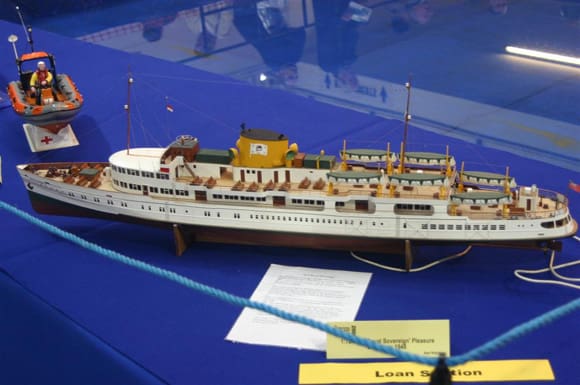
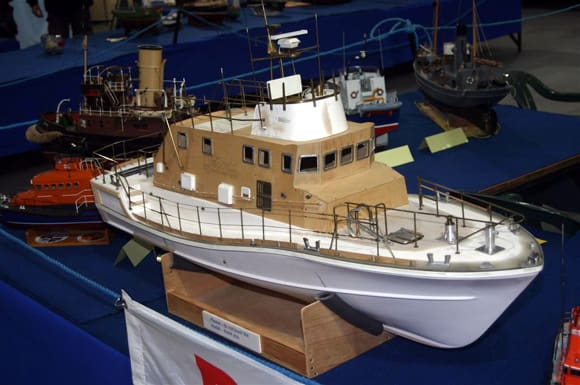
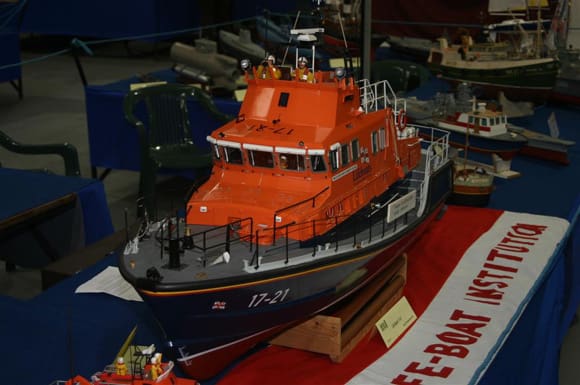
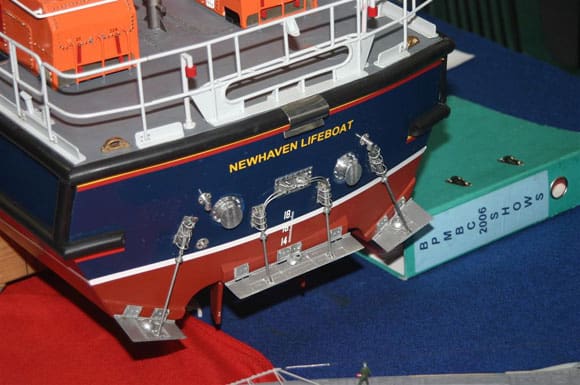
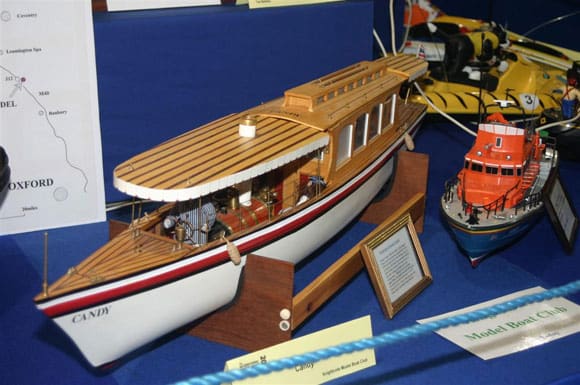
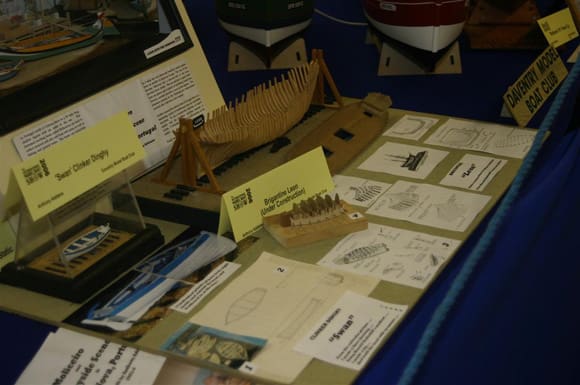
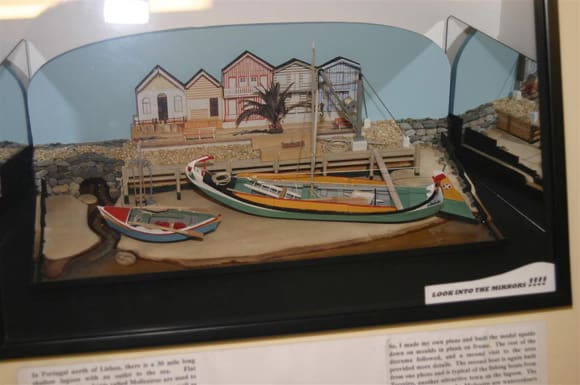
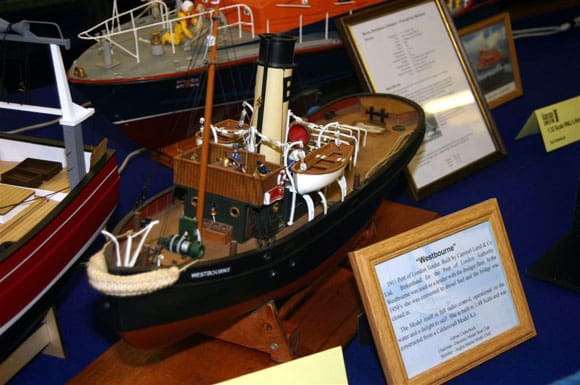
International Model Boat Show 2006
Back in November last year we made our way to the International Model Boat Show at Warwickshire Exhibition Centre on the Fosse Way. Those of you who regularly read this column will be aware that this is an annual visit for us, having been every year since its inception.
The show has stuck to the original formula of a mix of club and trade stands and this works very well. The show runs over three days, from the Friday to the Sunday and this helps to even out the numbers attending. On this occasion there were twenty-six trade attendees listed in the introduction sheet we were given, in addition to the twenty-three clubs plus individual modellers exhibiting.
Our first photo, Photo 9, is of Arthur Barrs HMT Lady Shirley. This is based on the original, which was built in 1937 for deep sea fishing and converted to war service in 1939 for Anti Submarine, Convoy and Escort duties. In 1941 she sank, unaided, U111 by depth charge and gunfire, taking 44 prisoners. She was sunk in December 1941 by U374 in the Straits of Gibraltar.
The model was built over a period of 19 months from a McGregor plan using a grp hull, beech sub frames with a ply deck. The superstructure was Plasticard with brass and white metal fittings. Arthur is a member of Anglia Marine Model Club.
Another model on the Anglia Marine stand was this version of a Target Launch, Photo 10. Displayed by Steve Brown, A577 was a 40ft Armoured Target boat built in the mid 1930s by the British Power Boat Company. The full size version displaced 7.5 tons and had a beam of 8.5 feet. Powered by triple Meadows engines, it could reach 23 knots. There were no model details.
Photo 11 is of a model of the Gay class torpedo boat P1048 under construction. The model is being built in the same manner as the original, using double diagonal planking which gives a strong, but light, structure. The full size version was 75ft 2ins in length, 20ft 1in in beam and weighed 65 tons fully loaded. Power was supplied by three Rolls Royce Packhard engines delivering 4500 bhp. Top speed was 40 knots plus.
This model of the cabin cruiser Nouveau caught the eye because of its attractive lines. Built by Ray Palmer, and displayed on the Hanwell and District Model Society stand, the model was constructed principally from wood, using two 550 motors on direct drive for propulsion. Acoms radio was used for control, Photo 12. Still on the subject of cabin cruisers, this model by Alf Andrews of the Pandora, Photo 13, was based on his own full size vessel. Built from odds and ends from the scrap box, the hull is built from balsa covered with grp cloth and epoxy resin. Other timber used is teak and the model is finished with International white enamel and yacht varnish. The model is powered by a Jeti 45/3 Brushless motor and power supplied by fourteen 3,300 mAh NiMH cells. To quote Alf this gives the boat an impressive turn of speed!
On the Vale Model Boat Club stand was this very impressive model of the Magga Dan, Photo 14. Although there were no model or builders details, the information supplied gave a comprehensive summary of the vessels involvement with the Commonwealth Trans-Antarctic Expedition 1955-1958. The club itself is based in Evesham, Worcestershire and has its own website at ValeModelBoatClub.co.uk.
Continuing our walk around the show, we spotted this rather nice model of a slipper launch, Photo 15. This model of the Elegance was scratch built by Ron Yerby. Over on the Kingsbury Water Park Model Boat Club stand was this model of the Britannia Pilot Boat, Photo 16. Based on the Mountfleet Models kit the model was fitted with working lights, triple expansion steam engine sound and horn. Built by I. Smith of Coventry, the notes tell us that it was fitted with a steam plant but now uses electric power because of too many burnt fingers!
By the smaller of the two indoor pools we spotted this model of the M.V. Royal Sovereign. This model, Photo 17, represents the third vessel to carry the name. The full size vessel was built by William Denny of Dumbarton and went into service in 1948. 290ft long she had a passenger capacity of 1,783 and sailed from Tower Pier to Southend and on to Margate. Withdrawn from service in 1967 she was sold to Townsend Ferries. The model, by Alan Robinson, is built to plans from the National Maritime Museum to a scale of 1:72. Its always nice to see models under construction, like the Gay class MTB as it helps to show the different materials and techniques used in our hobby. This model of an Arun Lifeboat, Photo 18, currently shows whats under the paint! Built by Kim Belcher, it started its life as a Metcalf Mouldings Arun hull but has now been modified to represent the later version Arun, A.J.R. and L.G. Uridge 52-25. Kim has taken the trouble to provide a few A4 sheets of notes, plus photographs, to exhibit with his model, detailing step-by-step actions taken to get the model to this stage.
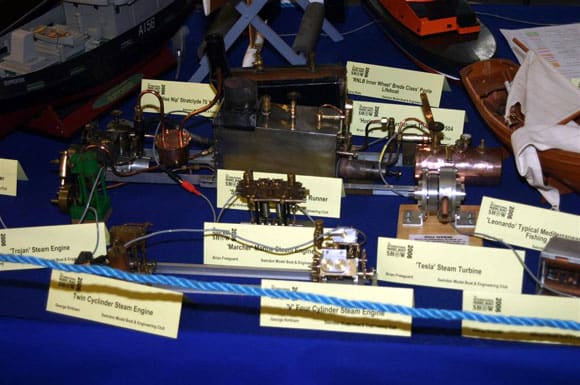
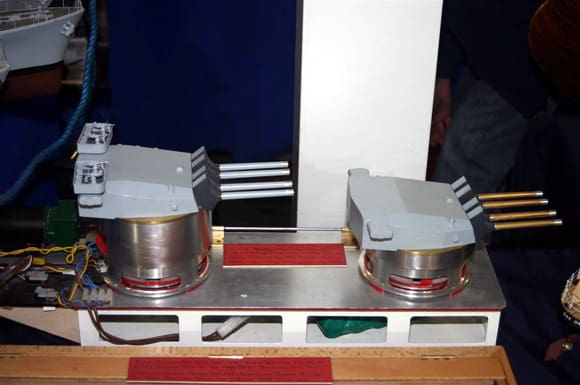
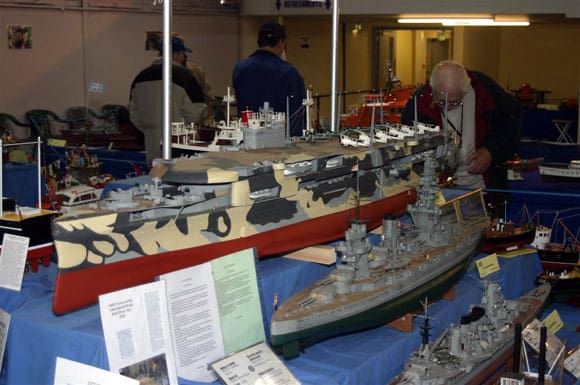
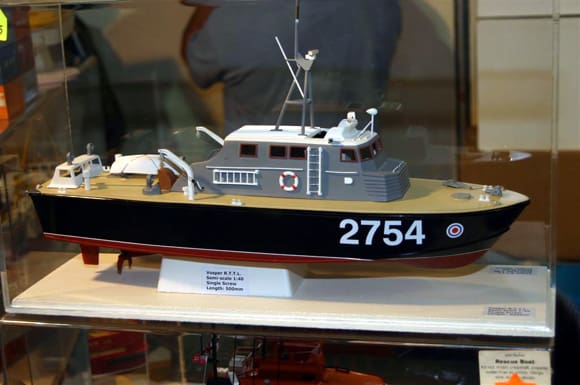
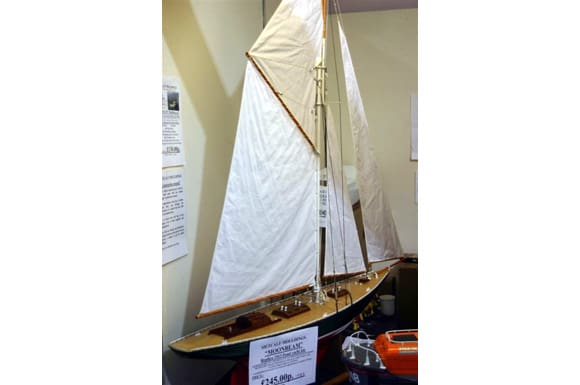
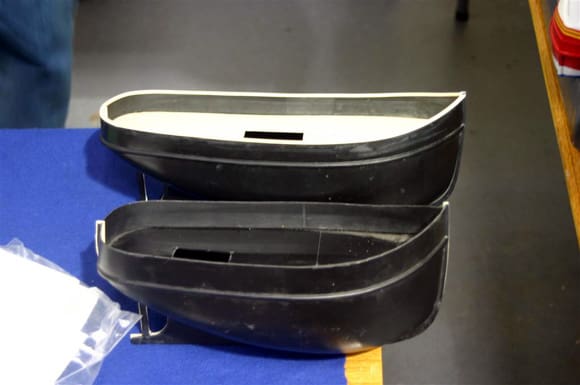
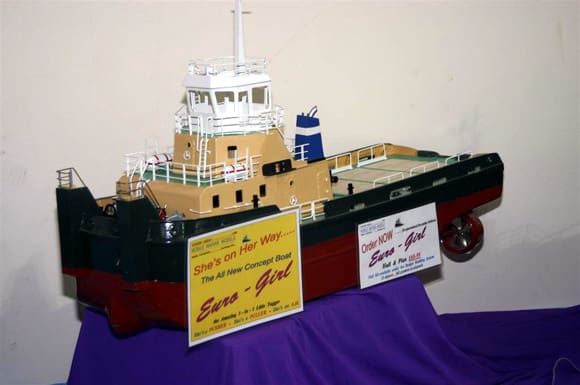
Photo 19 is of a lifeboat as were more used to seeing it! RNLB David and Elizabeth Ackland, the Newhaven lifeboat, was built by Phil Lock of the Black Park Model Boat Club. Photo 20 shows some of the detail of this fine model.
Another club who exhibit regularly is the Knightcote Model Boat Club, a local Warwickshire club. On their stand was this model of Candy, by Tom Bellamy, Photo 21. The notes provided tell us that it was named after the builders Jack Russell terrier, scratch built on a grp hull and has a captain and passengers. The cabin has seats, stove, wine rack, wall lights and a (non-working) toilet! Although a steam engine is fitted, the model is electrically driven and has a smoke generator and steam whistle and engine sound.
On the Daventry Model Boat Club stand Anthony Addams had an extensive display of a diorama and scratch built model boats. Photo 22 shows the general layout of the display with details of how to build small clinker dinghies to the front and the diorama to the left at the back.
The detail in the dioramas, Photo 23, represents Moliceiros flat bottomed working boats and the quayside at Costa Nova, Portugal. The model boats are based on photographs. The other models in the display show the Swan, a small clinker built dinghy and the Brigantine Lean, under construction. A most impressive display. (There will be a feature article on this diorama in a future issue. Ed.)
Next door, the Daventry Model Boat Club had a display of their members models. Chairman Adrian Clutterbuck was exhibiting his model of the Caldercraft Westbourne, Photo 24. The next club along, Swindon Model Boat and Engineering Club, were not only exhibiting their members models, but an extensive array of model steam power, Photo 25. There were single cylinder, twins, V-fours, steam turbines etc,. on display.
Walking between the stands we spotted this fine example of model making/model engineering by Alex McFadyen, Photo 26. Alexs notes tell us that these are two 1:96 scale turrets with 15in guns from the working model of the French Battleship Richelieu, about 50% complete.
For those of you who read this column regularly, do you remember our write up of last years show? If so, one model we looked at under construction was Mick Huggett of the Anglia Marine Clubs HMS Furious. Well, although we didnt see Mick to check, the model now looks pretty well finished and complete with Swordfish aircraft, Photo 27.
Finally a quick look at some of the traders offerings at the show. Model Slipway had a couple of new ones including this model of a Vosper RTTL at 1:40 scale. This single screw version has an overall length of 500mm, Photo 28. Metcalf Mouldings had their new version of Moonbeam, a very attractive replica of a 1913 pond yacht. The kit comes complete with grp hull, cnc cut wooden parts, sailcloth, and fittings, etc., Photo 29.
George Turner showed us a couple of tug hulls which are under development to produce kits at different sizes, Photo 30.
Brian Ward of Mobile Marine Models caught us and introduced us to EuroGirl, a multi-function tug, which can push, pull or perform anchor handling duties, Photo 31. Well, we must leave it there. Our thanks to Meridienne Exhibitions for their kind invitation.
Thats all for this month, happy modelling from Paul and Dave.




